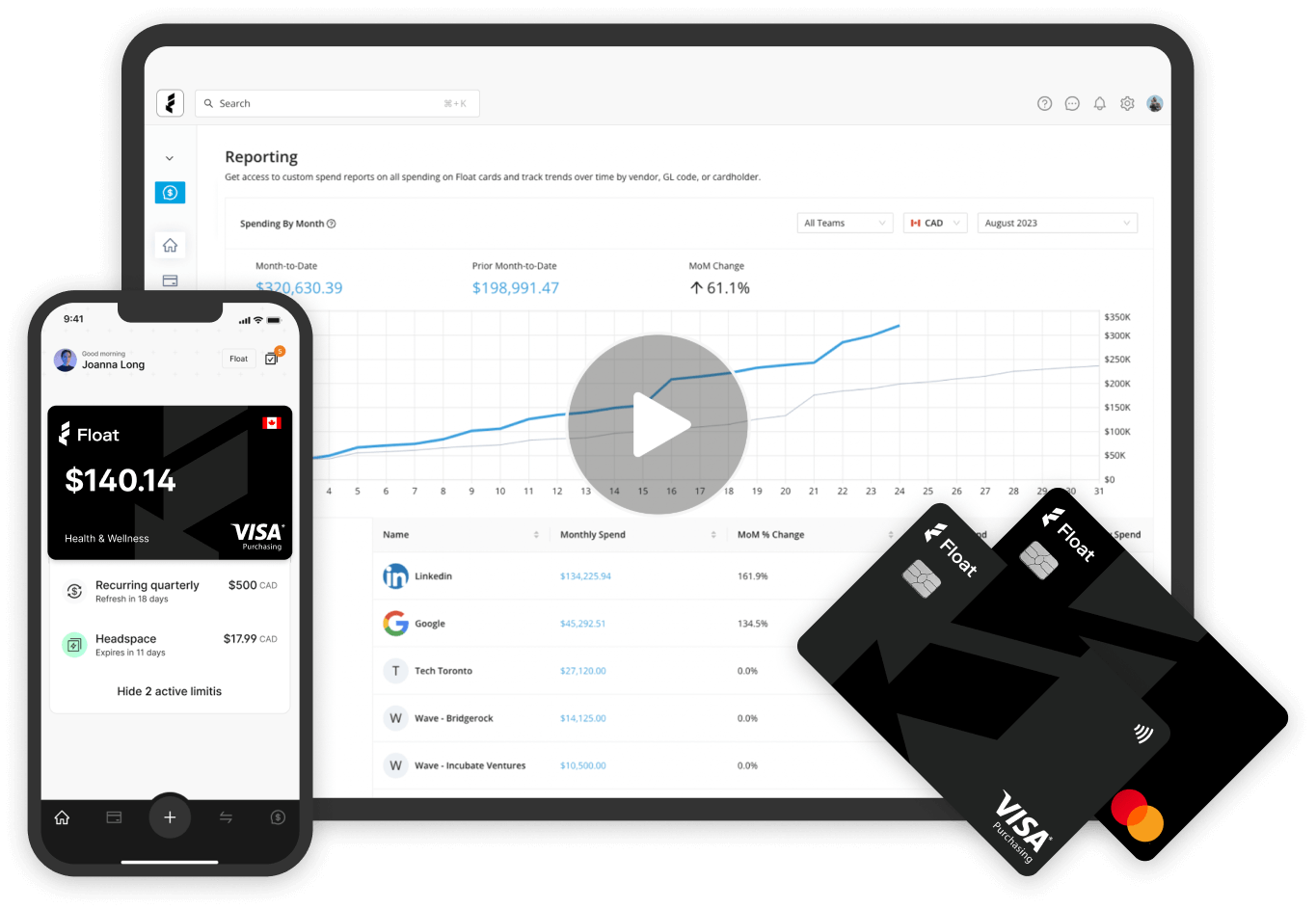Expense Management
How to Leverage Credit for Effective Working Capital Management
Let’s explore how credit can help you manage your working capital needs more effectively.
May 2, 2025

Tight cash flow is a constant concern for business owners, especially without proactive working capital management. When expenses pop up before revenue flows in, even the financially healthiest companies feel squeezed tighter than a too-small pair of pants.
If this sounds familiar, you’re in good company. Cash flow constraints are a key investment barrier for 50% of small businesses in 2025, according to the Canadian Federation of Independent Business (CFIB).
The good news?
Credit can help; it isn’t just a fallback plan for when things get rough. When used wisely, it can be a strategic tool to strengthen your working capital position and keep your operations humming.
In this guide, we’ll explain how credit can help you manage your working capital needs more effectively and share smart strategies to help you build a stronger financial foundation.
What is working capital management?
At its simplest, working capital is the money you have available to run your day-to-day operations. It’s calculated by subtracting your current liabilities (what you owe in the short term) from your current assets (what you own and can quickly convert to cash).
Okay, so what is working capital management?
Working capital management is about balancing the cash flow in and out of your business. Think of it as ensuring your business always has enough gas in the tank to keep moving, without running on fumes or overfilling the tank and wasting resources.
Why working capital management matters
Small businesses often face working capital trouble because of delayed customer payments, seasonal swings, rising inventory costs or unexpected expenses. (Surprise! That HVAC system you forgot about needs replacing.)
Managing cash flow isn’t always enough. Traditional cash management practices like speeding up receivables and stretching payables can help, but they don’t solve every problem. And without careful expense management, it’s easy to fumble the timing.
This is where smart credit use can change the game. When used strategically, credit helps you bridge cash flow gaps, seize growth opportunities and manage uncertainty without putting your business at risk or your blood pressure through the roof.
Best business credit cards
Compare top options, fees and benefits for
Canadian companies.
How can you use credit to manage your working capital more effectively?
Credit can do more than just plug holes. It can help fuel smarter decisions. From bridging timing gaps to unlocking new opportunities, here are six strategies to make it work for your business.
1. Bridge cash flow gaps
Revenue and expenses rarely move in perfect sync. Maybe you need to pay suppliers now, but won’t get paid by customers for another 30 or 60 days. A line of credit or a corporate card can give you breathing room. It covers short-term obligations while you wait for incoming cash, helping you stay current on bills and payroll without draining reserves or resorting to “please pay us” emails.
2. Fund upfront investments
Growth often demands investment before payoff. You might need to buy inventory, ramp up marketing or add staff ahead of a busy season. Using credit to fund these moves can help you navigate them smoothly, without sacrificing cash reserves that keep your business stable. (Or worse, tapping into your rainy day fund before it even rains.)
3. Take advantage of supplier discounts
Suppliers sometimes offer discounts for early payments. With credit, you can pay sooner, score a discount and then pay off your balance when your regular cash flow catches up. Saving money while spending it? Not quite magic, but close.
4. Smooth out seasonal fluctuations
Businesses with seasonal peaks like retail, tourism, or construction often face working capital pressure in the off-season. Access to credit lets you cover costs during slower periods and ramp up quickly when demand returns, without resorting to sad desk lunches and crossed fingers.
5. Seize opportunistic deals
Sometimes opportunities come knocking when cash flow isn’t at its strongest. A supplier offers a bulk discount, a new market opens up or a key hire becomes available. Credit gives you the flexibility to move fast and capitalize on opportunities that can pay off big (and leave your competitors wondering what hit them).
6. Avoid draining cash reserves
It’s tempting to rely solely on available cash, but keeping a healthy cash reserve is critical for resilience. Smart use of credit means you can cover operational costs without depleting your safety net, making you better prepared for unexpected bumps in the road. (And spoiler alert: there are always bumps.)
Best principles for using credit strategically
Using credit effectively requires going beyond securing access to include clear intentions about use. These principles will help you ensure credit remains a growth tool, not a financial trap.
Tie credit use to business objectives
Only use borrowed funds for initiatives that drive revenue, improve efficiency or support growth.
Forecast cash flow carefully
Know when and how you’ll repay borrowed amounts before you draw on credit.
Monitor your financial performance regularly
A strong month-end process is especially important when using credit. Track your working capital needs, spot risks early and adjust strategy.
Understand the true cost of borrowing
Weigh interest rates, repayment terms and potential fees before tapping into credit.
Stay disciplined
Credit should extend your runway, not send your business into a nosedive.
Bringing your credit strategy back to business fundamentals is key. Does this investment or expense fit with the goals you’ve set for your company? Will it improve your financial position over time? If the answer isn’t a clear yes, it’s time to hit pause.
Keeping tabs on working capital needs
Strong working capital management isn’t a one-time task. It’s an ongoing process that demands attention and adaptability. Building a robust month-end review process that looks at revenue, expenses, cash flow timing and working capital exposure can help you spot issues before they become crises.
Tools like Float’s corporate card platform make this even easier. Real-time spend tracking, automated expense categorization and easy-to-read reports give you clear visibility into cash flow patterns, upcoming obligations, and available credit.
With these, you can make informed decisions faster (and enjoy an entire weekend without financial fire drills).
Strengthen your financial foundation with Float
Working capital management is part art, part science. Used wisely, it can help you manage expenses, smooth cash flow and position your business for sustainable growth.
Float helps Canadian businesses tap into the power of smart expense management and strategic credit use.
Learn how Float’s modern platform can help you strengthen your financial foundation and easily manage working capital.
Written by
All the resources

Expense Management
Managing Travel Expenses for Growing Companies
Learn how to streamline manual work and empower your teams with a solid travel expense management process.
Read More
Expense Management
How Do You Handle Employee Reimbursements Efficiently?
Learn how to simplify employee reimbursements with efficient, scalable strategies for small businesses and growing finance teams.
Read More
Corporate Cards
Amex Global Platinum Dollar Card Alternatives for Canadian Businesses in 2026
Canadian businesses are dealing with the discontinuation of the Amex Platinum Global Dollar Card and looking for a replacement card.
Read More




